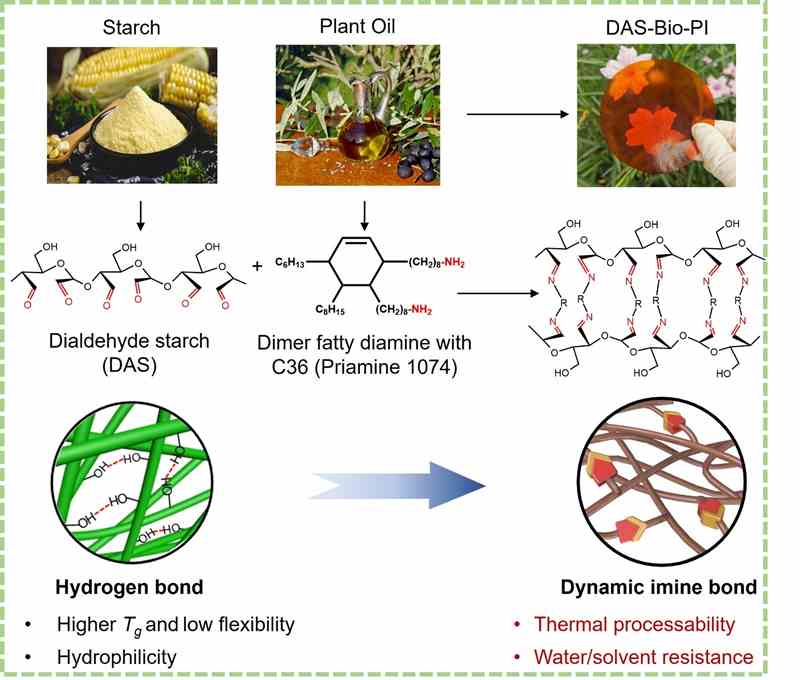A Thermal Processable, Self-Healing, and Fully Bio-based Starch Plastic
Published 22 September, 2023
The transfer of plastic waste from land to oceans and its subsequent accumulation within the food chain poses a major threat to both the environment and human health. Consequently, the development of renewable, low-cost and eco-friendly alternative materials has garnered tremendous attention and interest.
Starch is a highly desirable material for the production of bioplastics due to its abundance and renewable nature. However, limitations such as brittleness, hydrophilicity and thermal properties restrict its widespread application. Addressing these concerns, a group of researchers from State Key Laboratory of Pulp and Paper Engineering at South China University of Technology presents a novel strategy for fabricating a fully bio-based starch plastic that exhibits numerous advantages, including superior flexibility, waterproof capability, excellent thermal processability and self-adaptability.
“Native starch exhibits great stiffness due to the strong hydrogen bonding between its molecular chains, resulting in challenges during thermal processing,” explains Xiaoqian Zhang, the first author of the study published in the KeAi journal Green Energy & Environment. “A covalent adaptable network was constructed to effectively weaken the hydrogen bonding and improve the stress relaxation of starch chains.”
“In the production of the fully bio-based starch plastic, dialdehyde starch was subjected to a mild Schiff base reaction with a plant oil-based diamine. This reaction resulted in the formation of dynamic imine bonds, which exhibited the ability to be cleaved and reformed reversibly under heat stimulation. Consequently, the starch plastic demonstrated remarkable thermal processability,” Zhang elaborated. “Additionally, the presence of long aliphatic chains in the diamine enhanced the steric hindrance of the starch molecule chains, leading to improved flexibility and hydrophobicity of the starch plastic.”
Xiaohui Wang, corresponding author of the study, added, “Our transparent starch plastic, which contains imine bonds, also demonstrates self-healing capability. It can repair not only scratches but also large-area damage with a simple heat-pressing treatment.”
Notably, the self-healing efficiency reached more than 88% in terms of mechanical properties. Such desirable properties render the starch plastic highly appealing for various practical applications. “Through this study, we have successfully introduced a novel design strategy for developing sustainable, thermal processable, and degradable bioplastics using fully bio-based materials,” concluded Wang.

Contact author name, affiliation, and email address: Xiaohui Wang, State Key Laboratory of Pulp and Paper Engineering, South China University of Technology, Guangzhou 510640, China. fewangxh@scut.edu.cn
Funder: This work is supported by the National Natural Science Foundation of China (32171721, 22208131, 52103109), Guangdong Province Basic and Application Basic Research Fund (2023B1515040013), the State Key Laboratory of Pulp & Paper Engineering (2022C01, 202209).
Conflict of interest: The authors declare that they have no known competing financial interests or personal relationships that could have appeared to influence the work reported in this paper.
See the article: Xiaoqian Zhang, Haishan Zhang, Guowen Zhou, Zhiping Su, Xiaohui Wang, Flexible, thermal processable, self-healing, and fully bio-based starch plastics by constructing dynamic imine network, Green Energy & Environment, 2023. https://doi.org/10.1016/j.gee.2023.08.002